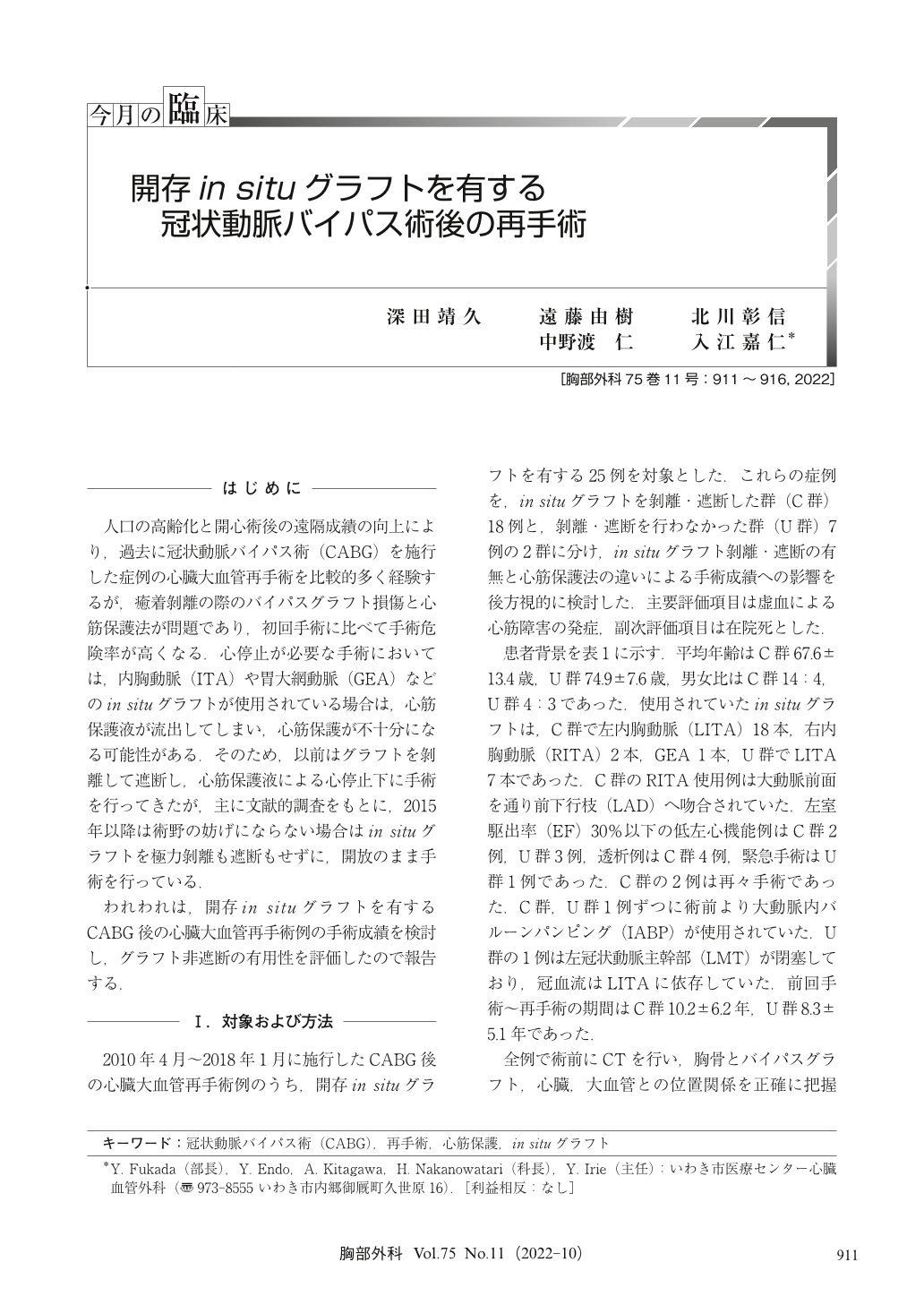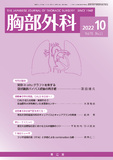Japanese
English
- 有料閲覧
- Abstract 文献概要
- 1ページ目 Look Inside
- 参考文献 Reference
人口の高齢化と開心術後の遠隔成績の向上により,過去に冠状動脈バイパス術(CABG)を施行した症例の心臓大血管再手術を比較的多く経験するが,癒着剝離の際のバイパスグラフト損傷と心筋保護法が問題であり,初回手術に比べて手術危険率が高くなる.心停止が必要な手術においては,内胸動脈(ITA)や胃大網動脈(GEA)などのin situグラフトが使用されている場合は,心筋保護液が流出してしまい,心筋保護が不十分になる可能性がある.そのため,以前はグラフトを剝離して遮断し,心筋保護液による心停止下に手術を行ってきたが,主に文献的調査をもとに,2015年以降は術野の妨げにならない場合はin situグラフトを極力剝離も遮断もせずに,開放のまま手術を行っている.
Background:Re-operative cardiac surgery after prior coronary artery bypass grafting (CABG), using in situ graft is a challenge. Technical difficulties regarding this procedure include risks of graft injury and myocardial protection. The conventional strategy involves re-sternotomy, dissection, and temporary occlusion of the in situ graft to prevent cardioplegia washout. However, the problem with this procedure is that injury to the in situ graft can result in catastrophic complications.
Methods:We reviewed 25 redo cases of patients who had prior CABG with patent in situ grafts. The in situ grafts were dissected and clamped in 18 (group C) patients, whereas in 7 (group U) patients, the in situ grafts were not dissected or clamped. All patients underwent re-sternotomy, aortic cross clamping and cardiac arrest with cardioplegia. Besides, myocardial protection was obtained using moderate hypothermia and systemic potassium injection in group U.
Results:There were no injuries to the in situ grafts in either group. The peak creatine kinase-MB values were not significantly different between the two groups. Postoperative ejection fraction was preserved in both groups.
Conclusions:The simplified approach of no-clamping technique yielded safety and effectiveness for myocardial protection in redo cases for patients with prior CABG in the presence of patent in situ grafts.

© Nankodo Co., Ltd., 2022


